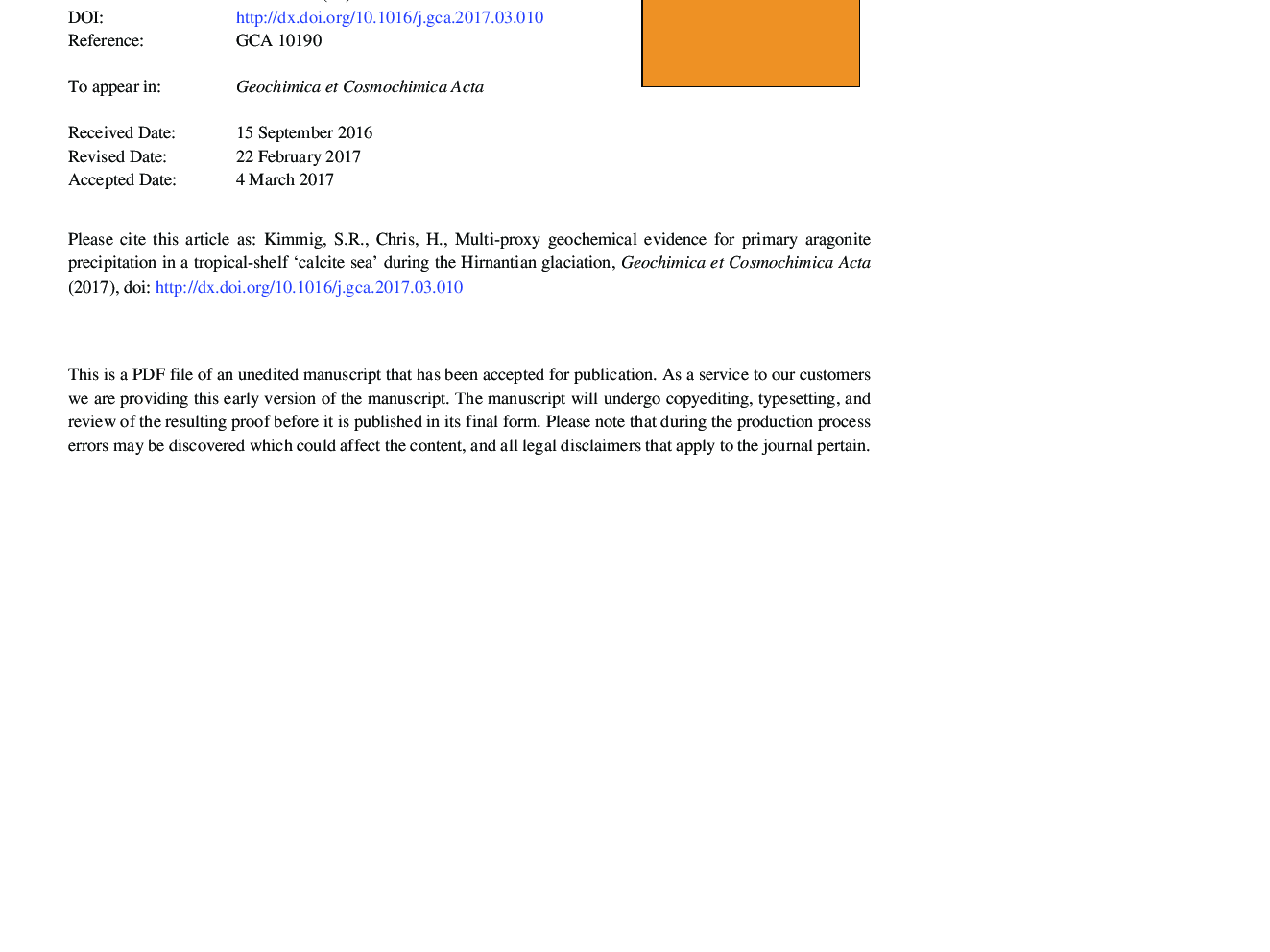| Article ID | Journal | Published Year | Pages | File Type |
|---|---|---|---|---|
| 5783423 | Geochimica et Cosmochimica Acta | 2017 | 48 Pages |
Abstract
A positive excursion in sedimentary δ26Mg values (2-3â°) is recorded in a mud dominated carbonate succession spanning the Hirnantian glaciation event in a tropical-shelf sea in Nevada. The increase is coincident with lithofacies and biofacies indicators of sea-level change, and previously reported changes in sedimentary δ13C and δ44/40Ca values in the same section. The synchronousness of the isotopic changes is inconsistent with differences in the oceanic residence times of Mg (13 Myr), Ca (0.5-1 Myr), and C (0.1 Myr), indicating that the isotopic trends cannot be attributed to perturbations in the oceanic cycling of these elements. Instead, a mixing analysis (δ26Mg vs. Ca/Mg) reveals that the stratigraphic shift in sedimentary δ26Mg values is an artifact of changing dolomite abundance in the carbonate succession, which increases by an average of â¼12 mol% during the glaciation. The mixing analysis also uncovers stratigraphic changes in end-member limestone δ26Mg values that are tentatively attributed to variations in aragonite abundance. The aragonite, which inverted to calcite during diagenesis, accumulated during the glacio-eustatically controlled sea-level lowstand in the study setting. Although this interpretation is vulnerable to diagenetic effects that are difficult to evaluate, it is strengthened by shifts to lower δ44/40Ca values and higher δ13C values in the same section. Experiments show that aragonite can precipitate in seawater with the chemistry of a 'calcite sea' at temperatures above 20-23 °C. Considering the warm climates of the early Paleozoic, temperatures above this range were likely common in low latitudes. This study shows that the isotopes of Mg, Ca, and C have the potential to fingerprint aragonite that has inverted to calcite in the rock record. It is important recognize carbonate successions where this has occurred so as to avoid misinterpreting facies-dependent changes in carbonate polymorph mineralogy as genuine records of secular changes in the elemental and isotopic geochemistry of seawater.
Related Topics
Physical Sciences and Engineering
Earth and Planetary Sciences
Geochemistry and Petrology
Authors
Sara R. Kimmig, Chris Holmden,
